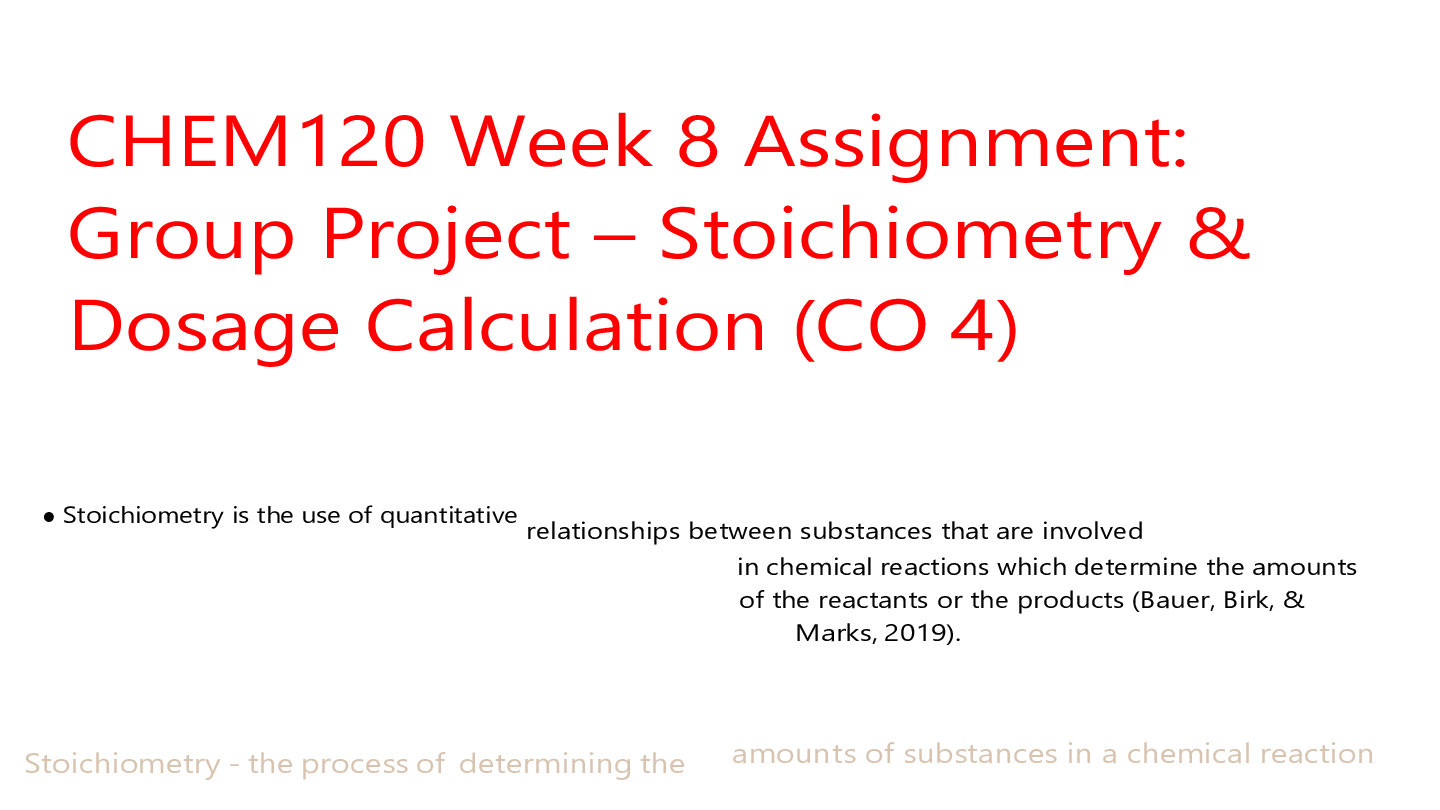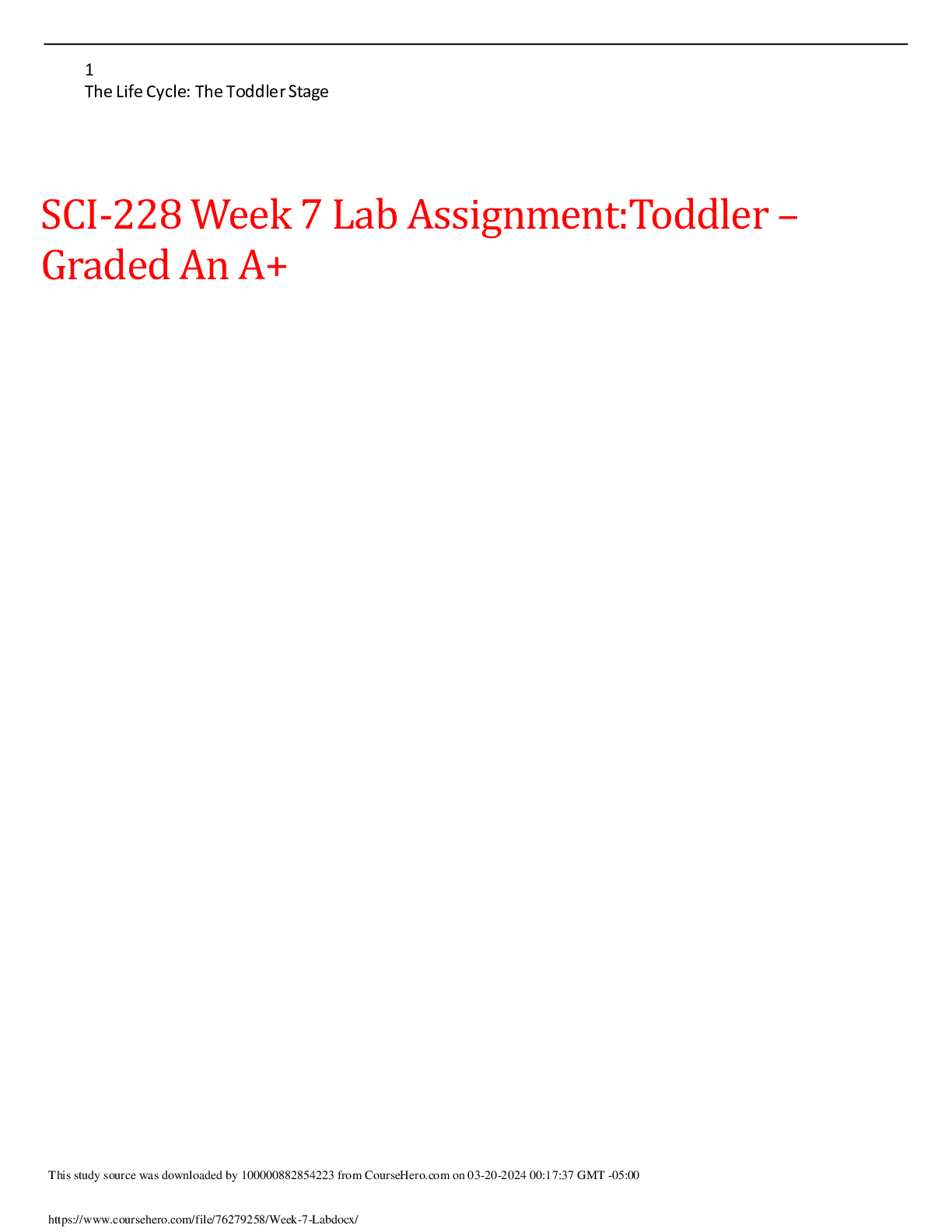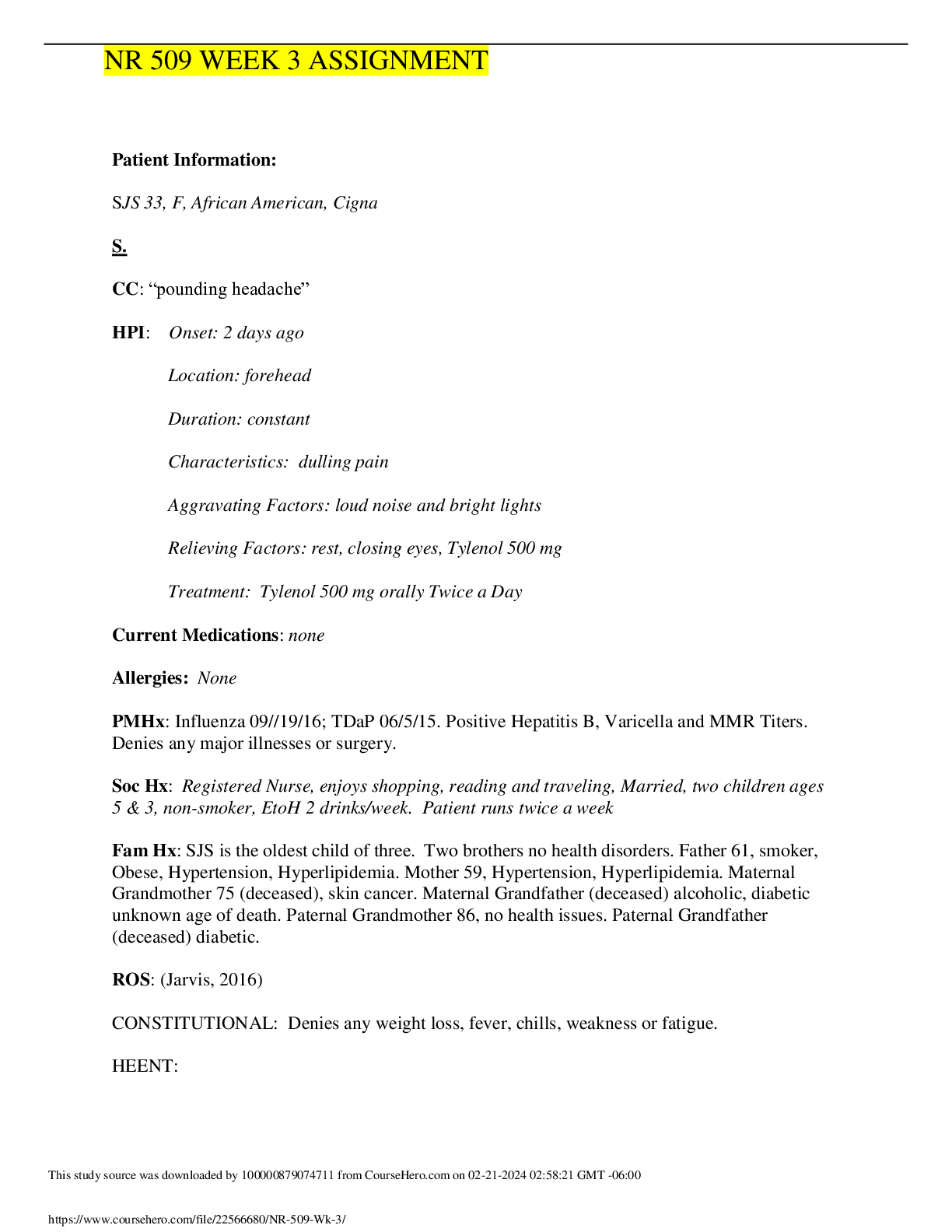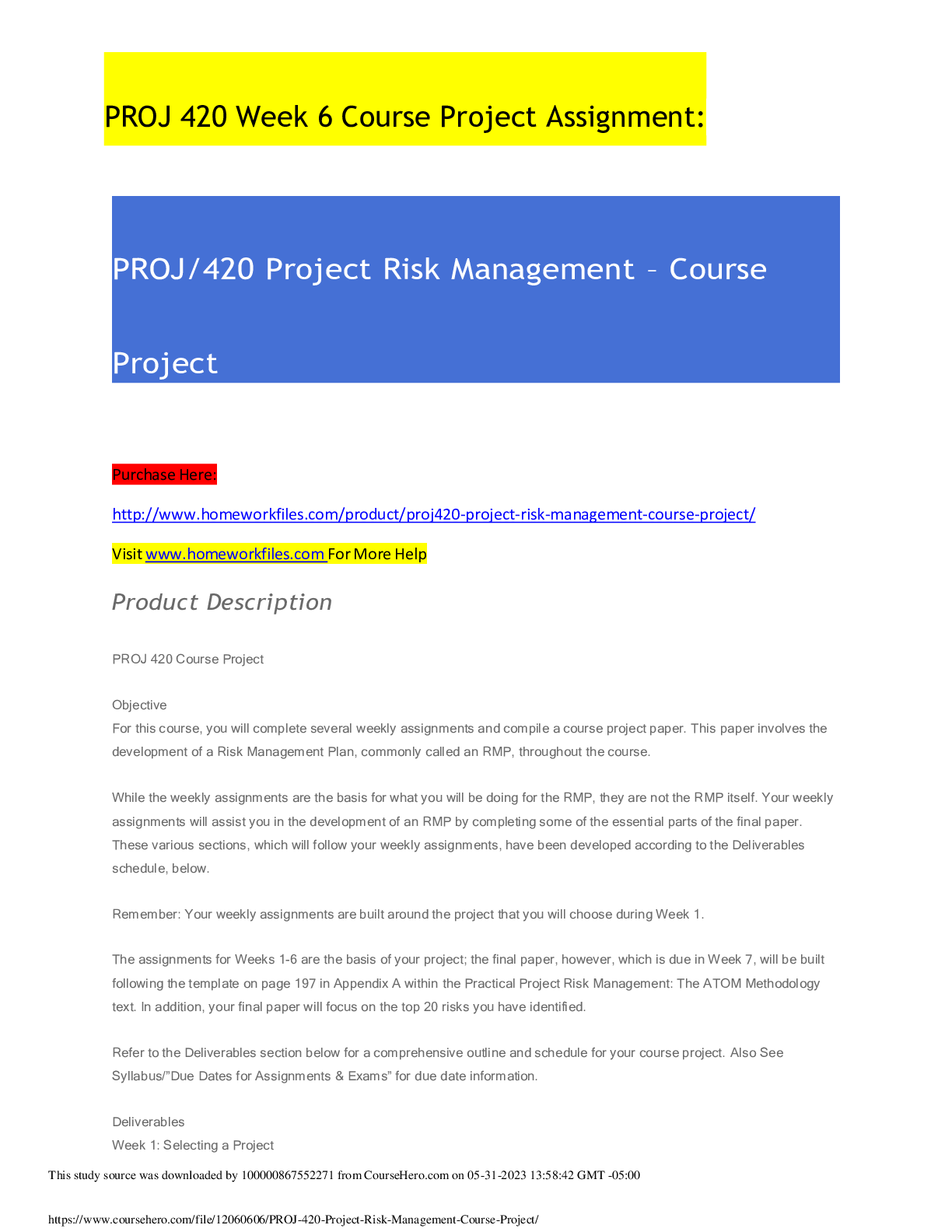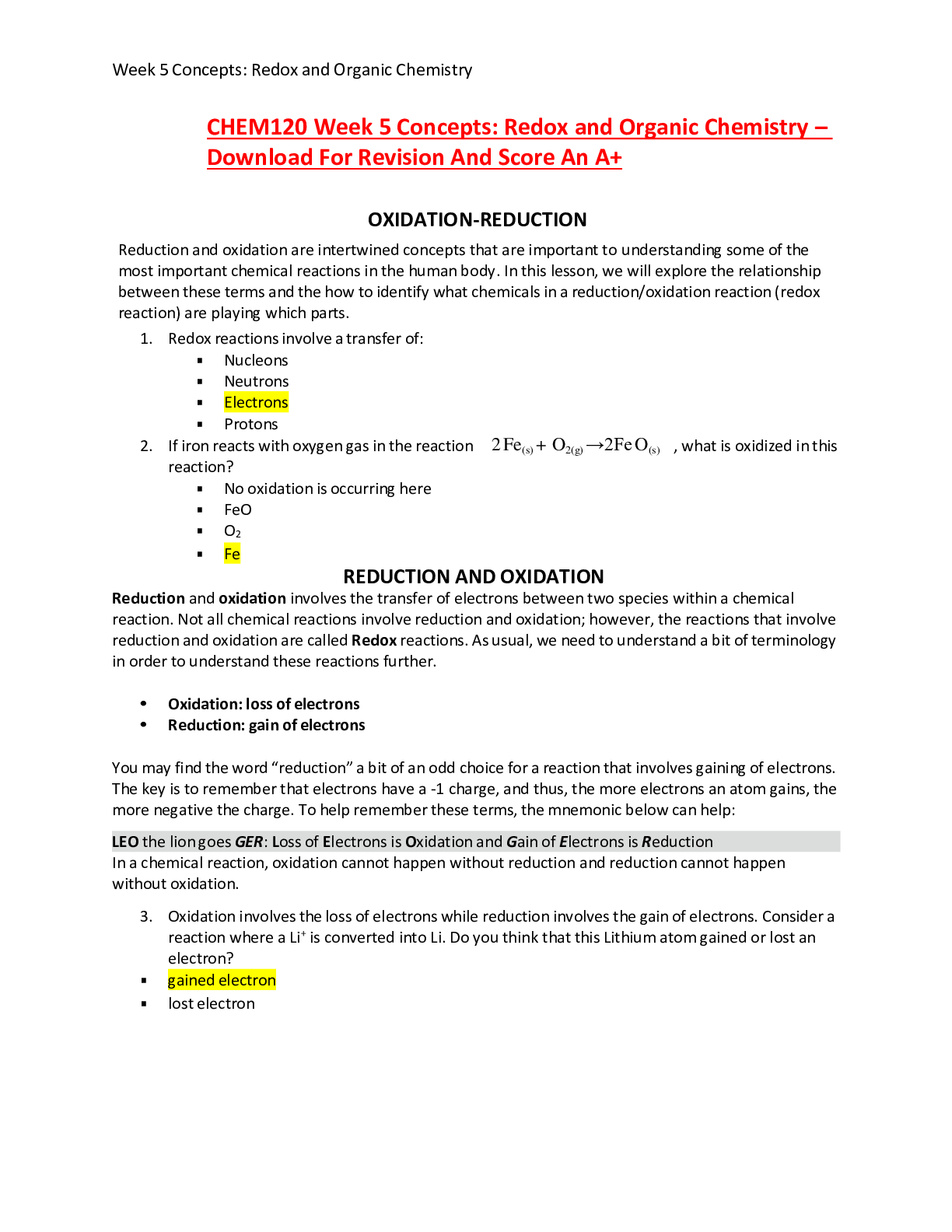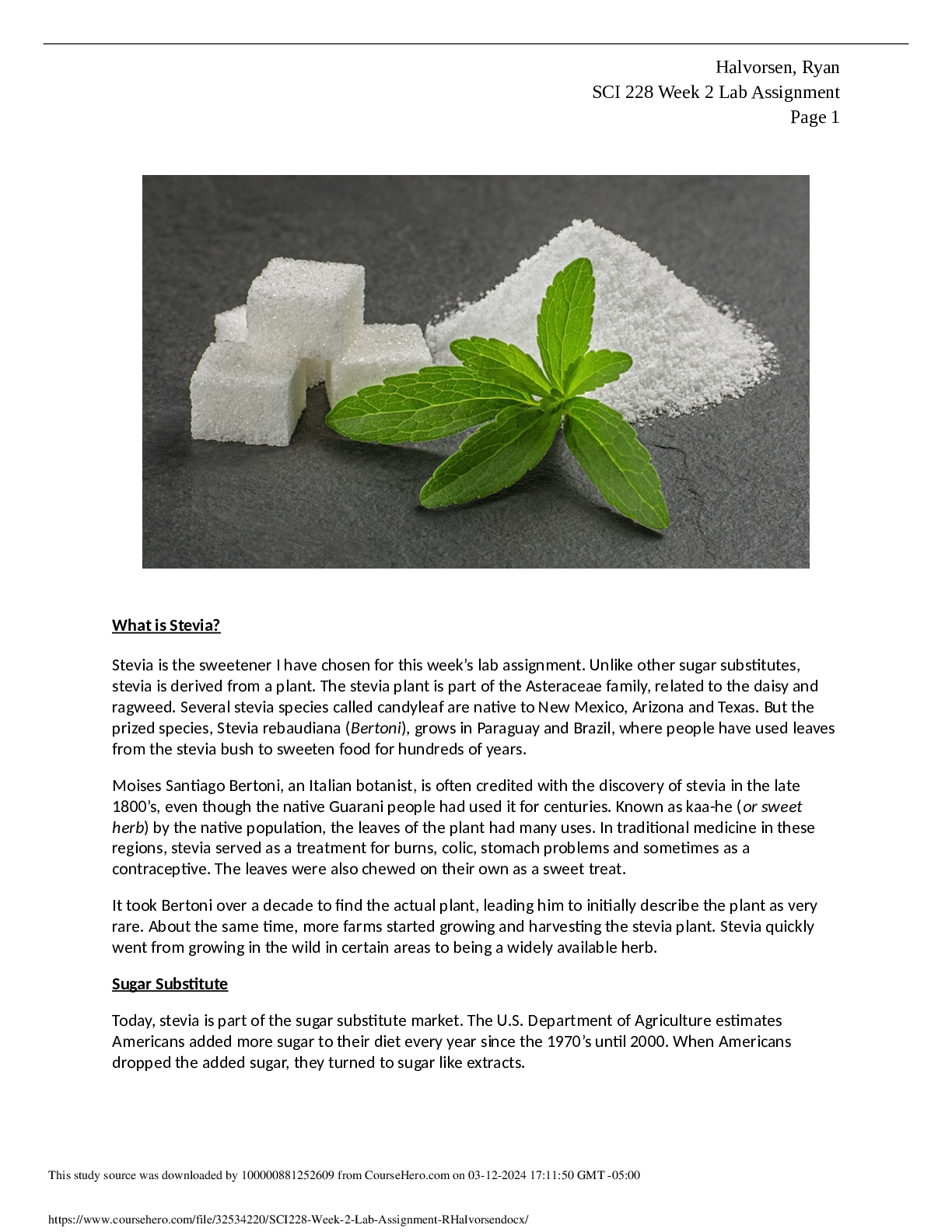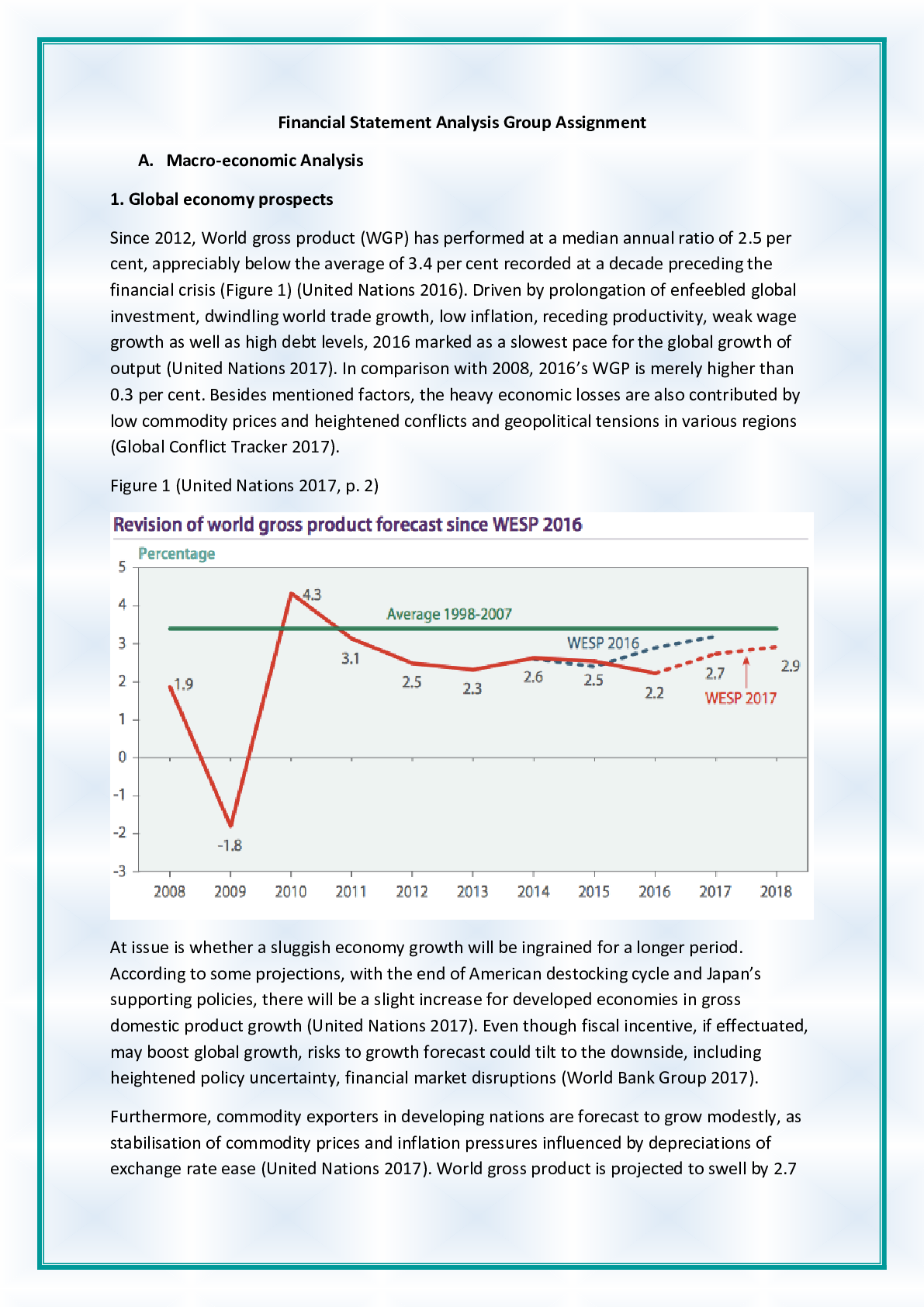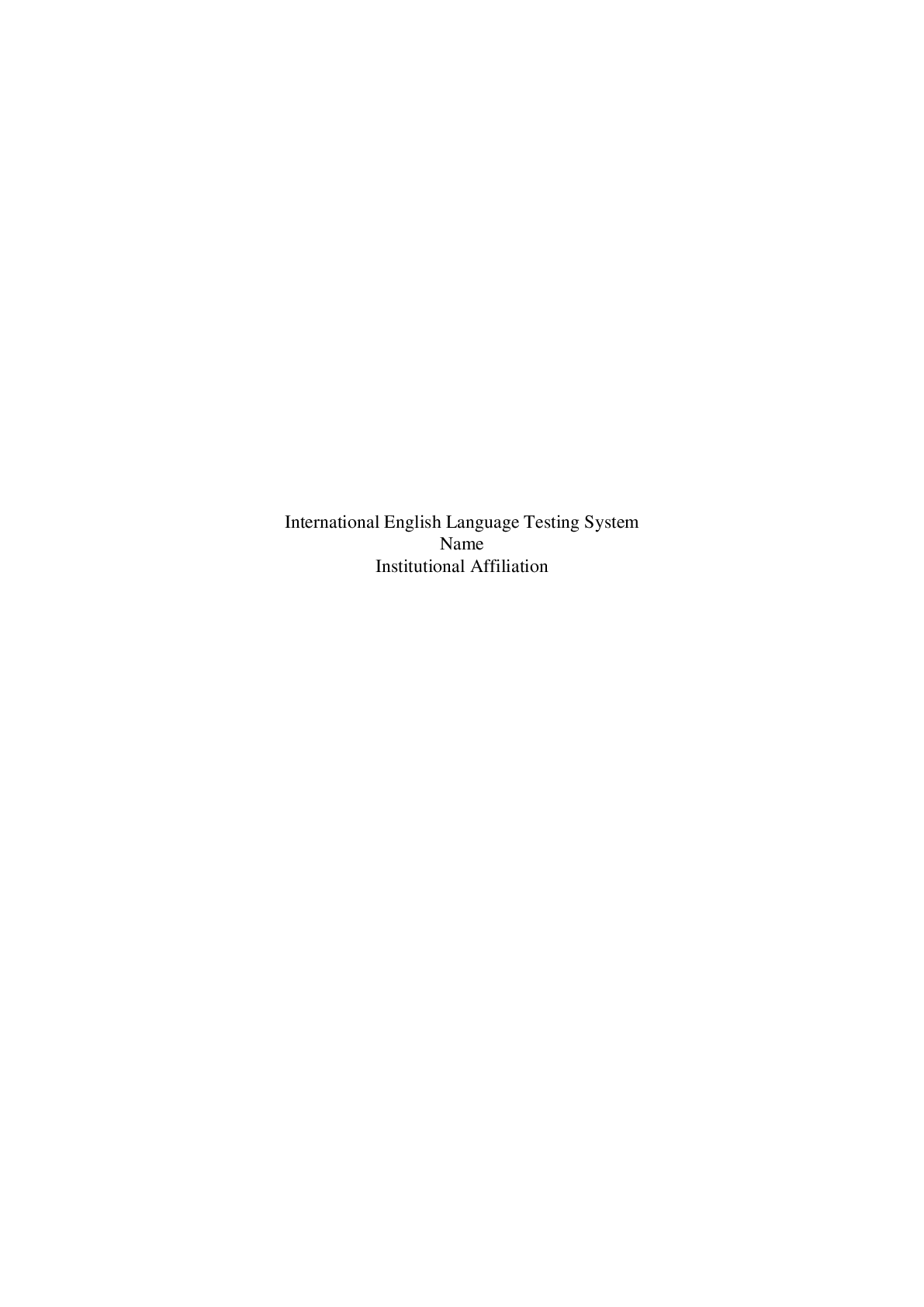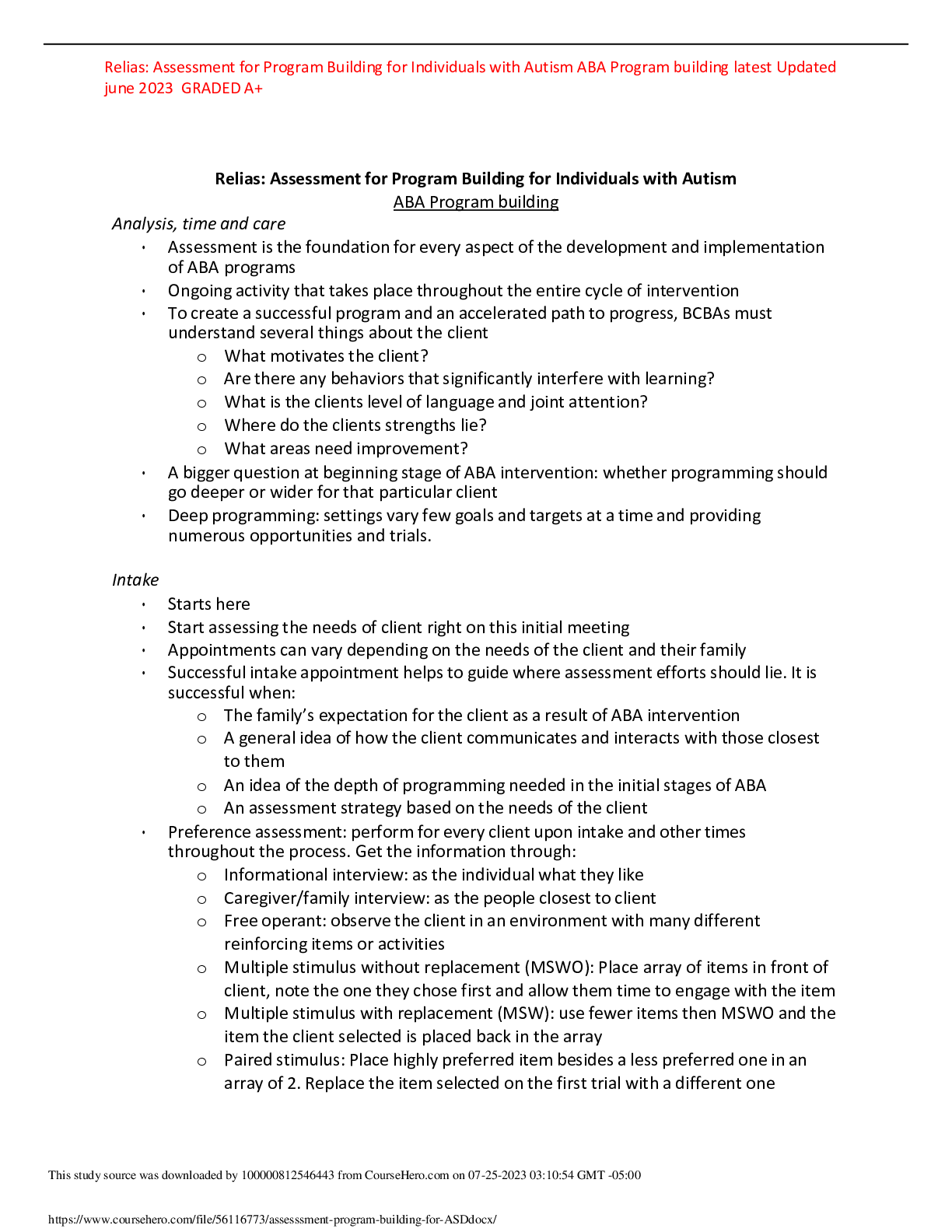General Science > ASSIGNMENT > SCI-228 Week 2 Lab Assignment: High Fructose Corn Syrup – Graded An A+ (All)
SCI-228 Week 2 Lab Assignment: High Fructose Corn Syrup – Graded An A+
Document Content and Description Below
SCI-228 Week 2 Lab Assignment: High Fructose Corn Syrup – Graded An A+ I decided to write about High Fructose Corn Syrup (HFCS). In this paper I will try my best to he... lp alleviate some of the popular hypothesis that HFCS is responsible for a growing obesity epidemic in this US and world wide. Also I will briefly review the origin, composition, and certain misconceptions that have baffled health professionals as well as the public. HFCS was slowly starting to be experimented on from the 1950’s through the 1960’s. “Phenomenal growth over the ensuing 35 or more years made HFCS one of the most successful food ingredients in modern history”, Buck AW. High fructose corn syrup. In: Nabors LO, ed. Alternative sweeteners. 3rd ed. New York, NY: Marcel Dekker, 2001:391–411. HFCS was being developed as a replacement for sucrose (sugar). And as such the replacement had to be thoroughly tested and studied in order to be a suitable replacement. HFCS was being used in secret for quite a few years before ever hitting the main stream market. HFCS became the center of much discussion between scientists, writers, and the general public in the US and around the world. “Although there was considerable speculation in the 1980s that fructose was responsible for several metabolic anomalies, convincing proof that this was a significant health risk was never forthcoming”, Reiser S, Smith JC Jr, Mertz W, et al. Indices of copper status in humans consuming a typical American diet containing either fructose or starch. Am J Clin Nutr 1985;42:242–51. Hallfrisch J, Ellwood K, Michaelis OE, Reiser S, Prather ES. Plasma fructose, uric acid, and inorganic phosphorus responses of hyperinsulinemic men fed fructose. J Am Coll Nutr 1986;5:61–8. Hallfrisch J, Reiser S, Prather ES. Blood lipid distribution of hyperinsulinemic men consuming three levels of fructose. Am J Clin Nutr 1983;37:740–8. “Sucrose from sugar cane or sugar beets has been a part of the human diet for centuries; sucrose from fruit or honey has been a part of the human diet for millennia. Sucrose continues to be the benchmark against which other sweeteners are measured. However, sucrose has posed significant technological problems in certain applications: it hydrolyzes in acidic systems, changing the sweetness and flavor characteristics of the product, and it is a granular ingredient that must be dissolved in water before use in many applications”, Salomonsson I. Shelf life: sucrose hydrolysis. Copenhagen, Denmark: Danisco Sugar A/S, 2005. Internet: www.danisco.com/cms/resources/file/eb241b041a6ed65/Shelf%20life.pdf (accessed 15 March 2007). The majority of the testing that was done on HFCS as well as sugar was to find an ingredient with the sweetness and effectiveness of sugar that would be stable to be mixed into acidic foods and beverages. And because of this HFCS was soon discovered to be a very good replacement to sugar. HFCS immediately aroused the attention of the agricultural industry. Since corn was a huge cash crop in the US, farmers and investors who were able to keep up with the steady supply and demand of corn stood to make a hefty profit. The decision for the name HFCS was a pure coincidence. Clearly the original name of glucose containing corn syrup was not as appealing as HFSC, however misleading many to think that HFCS might actually be pure fructose. “The glucose-to-fructose ratio in HFCS is nearly 1:1; similar to the ratio in sucrose, invert sugar, and honey. A similar ratio is also found in many fruits and fruit juices. The only practical distinction in composition between sucrose and other fructose-containing sweeteners is the presence of a bond linking fructose and glucose (sucrose chemical name: β-d-fructofuranosyl-α-d-glucopyranoside; 17). The glucose and fructose in HFCS, invert sugar, honey, and fruit is principally monosaccharide (free, unbonded). Thus, when HFCS historically replaced sucrose in formulations, no increase in dietary fructose occurred”, Colonna WJ, Samaraweera U. Sugar. In: Kroschwitz JI, ed. Kirk-Othmer concise encyclopedia of chemical technology. 4th ed. New York, NY: Wiley & Sons, Inc, 1999:1913–4. So now that we have touched on the origin/history behind HFCS let’s dive into the main topic of the HFCS obesity hypothesis. The studies and charts that I have viewed all seem to veer away from this misconception that HFCS has indeed been a contributing factor of obesity in the US an globally. “HFCS and sucrose are both carbohydrate ingredients that contribute ≈4 kcal/g on a dry solids basis. There can be no argument that long-term overconsumption of foods and beverages containing either one without compensation for energy expenditure may lead to weight gain”, Waldholz M. The sweetening of America. Wall Street Journal 2003 February 20. But we are not quite finished there. The studies that were conducted show conclusively that fructose is quickly absorbed by the liver and skip certain steps in glycolysis. “Fructose malabsorption appears only to be a problem when too little accompanying glucose is present. This was quickly recognized in early sports drinks formulated solely with fructose to enhance performance by exploiting fructose's low glycemic index. Riby et al (28) subsequently showed that the addition of even small amounts of free or polymeric glucose can ameliorate fructose malabsorption and accompanying gastric distress”, Riby JE, Fujisawa T, Kretchmer N. Fructose absorption. Am J Clin Nutr 1993;58:748S–53S. “ Since HFCS, sucrose, sugar, honey, and similar fruits and juices deliver the same sugars in the same ratios to the same tissues within the same time frame to the same metabolic pathways, there can be no question in anyone’s mind that HFCS is not a contributor to obesity”, Riby JE, Fujisawa T, Kretchmer N. Fructose absorption. Am J Clin Nutr 1993;58:748S–53S. In conclusion I would like to state that in this brief report I found out that HFCS is not a health risk to the general population, but that certain people’s appetite’s throughout the course of the 1950’s to the present day have increased because HFCS actually makes food taste better. And as a result the general population blamed HFCS for their obesity. [Show More]
Last updated: 1 month ago
Preview 1 out of 7 pages

Reviews( 0 )
Document information
Connected school, study & course
About the document
Uploaded On
Mar 13, 2024
Number of pages
7
Written in
Additional information
This document has been written for:
Uploaded
Mar 13, 2024
Downloads
0
Views
13



